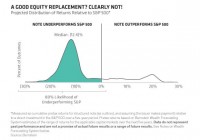Monday Morning Memo: ESG Criteria As A Tool For Stock Selection
By Detlef Glow Stock selection is one of the most critical aspects for equity fund managers, since that is the point where they are supposed to deliver so-called alpha as value added from active management and therefore the justification for their management fee. I have had a number of meetings with portfolio managers over the past 20 years, and most of them told me they try to find high-quality stocks. That said, one can imagine the quality of a stock is defined differently by each manager. Asked how they evaluate quality, most managers told me they have implied quantitative screens for financial data, and they meet with the management of companies to verify future expectations of the companies’ operation. But few of the fund managers told me they use environmental, social, or governance (ESG) criteria for stock selection. Nevertheless, nowadays a number of portfolio managers employ at least one ESG criterion in their screening process. This shows that the integration of ESG criteria has gained ground in the conventional asset management industry. From my point of view it is not surprising that even conventional fund managers have started to use ESG criteria, since these data deliver a unique view of a company that is not dependent on financial data. Fund managers who employ ESG data and criteria in their selection process have an opportunity to gain a competitive edge through the use of information that is not used by their competitors. But, what information can be gathered from ESG criteria? Using ESG criteria the research process should lead to companies that have good policies on environmental and social aspects and a strong management that follows best-practice guidelines and has no conflicts of interest. In more detail ESG data can be used to identify so-called corporate-specific risks, i.e., the risk of fatalities, outages, fraud, or strikes as well as macro risks such as labor intensity or a shortage of skills, weather impacts, data protection, security issues, or possible water shortages. From my perspective the lack of education is a key factor of why ESG criteria will not be used widely in the asset management industry in the short term. But, with the turnover in staff and the educational efforts by industry associations and promoters of advanced education courses, the use of ESG criteria will become more popular over time. There is evidence that investors from Generations X and Y are more demanding with regard to information about how their money is invested. In addition, surveys have shown that investors from these generations are also more tuned to a lifestyle of health and sustainability and want to invest their money in funds that have similar goals in place. This means the demand from investors for products using a sustainable investment approach should increase, since Generations X and Y have just started to become investors. From my point of view this demand will be the main driver for a change in thinking and acting within the wider asset-management industry. Early adaptors might be the winners in this trend, since they can build up a reputation as thought leaders, along with a performance track record, prior to their competitors. The views expressed are the views of the author, not necessarily those of Thomson Reuters.
